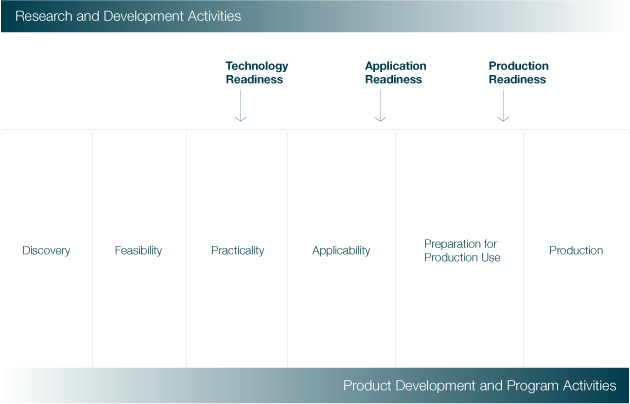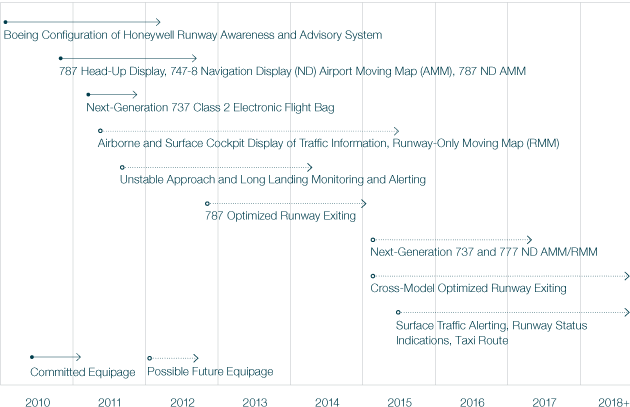
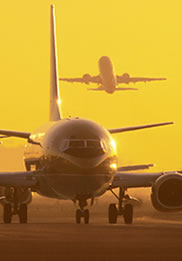
Flight deck design improvements can reduce the risk of runway incursion, confusion, and excursion,
resulting in safer and more efficient taxi, takeoff, approach, and landing operations.
By Sam Clark, Flight Deck Research Engineer, and
George Trampus, Flight Deck Crew Operations Integration Engineer
Boeing’s goal is gate-to-gate enhanced crew awareness that promotes safety and efficiency.
Runway safety enhancements range from enhanced airport signage and markings, to improved procedures and training, and new flight deck displays, controls, and alerting. This article discusses Boeing’s runway safety strategy and the flight deck design solutions being researched and developed to provide crew information and awareness that promote runway safety and operational efficiency.
A collective effort and a shared responsibility
Airports, air traffic control (ATC), regulators, airplane and avionics manufacturers, and airplane operators each have unique responsibilities and challenges to ensure the safest possible airport environment. Airports must focus on visible, understandable signage and well-defined and well-maintained surfaces. ATC must provide safe and efficient airplane control and separation procedures and services. Regulators must facilitate improvements with guidance and oversight. Airplane and avionics manufacturers must offer cost-effective flight deck solutions that provide useful operational information and awareness. Airlines must establish effective policies, practices, and procedures and balance fleet risk and enhancement costs and benefits.
Boeing support of runway safety efforts
Boeing is working with the commercial aviation industry to develop a runway safety approach based on a data-driven consensus of root causes, risk factors, and interventions. Integration with existing and planned NextGen air traffic management strategies is a key consideration. Boeing actively supports government and industry runway safety efforts and is working with organizations such as the U.S. Federal Aviation Administration, the Radio Technical Commission for Aeronautics (RTCA), the International Civil Aviation Organization, the Commercial Aviation Safety Team, and the Flight Safety Foundation to develop industry guidelines, standards, and solutions. Boeing also funds research and product development and collaborates with customers and vendors to provide flight deck solutions for both current and future airplanes.
Boeing supports the RTCA Special Committee for Automatic Dependent Surveillance Broadcast (ADS-B), SC-186. (For more information about ADS-B, see AERO second-quarter 2010.)
Boeing runway safety strategy
To reduce runway incursion and confusion events, Boeing’s near-term flight deck design strategy is to improve flight crew awareness of location during taxi, takeoff, approach, and landing. The longer-term Boeing strategy is to improve crew awareness of taxi route, airport traffic, runway status, and runway traffic conflicts. The goal of these efforts is an on-ground awareness of position, route, and traffic comparable to that provided in-flight today.
To reduce runway excursion events, Boeing’s flight deck design strategy is to improve flight crew awareness of predicted and actual takeoff, approach, and landing performance. This takes the form of providing vertical guidance to all runways, and improved performance calculations, displays, and alerting.
Boeing’s runway safety strategy is driven by industry consensus on root causes and interventions. Solutions are designed to provide flight crews with information and awareness to prevent runway incursion, confusion, and excursion.
Boeing flight deck enhancement development process
Once specific safety areas, causal factors, and issues have been determined, Boeing research and product development teams identify possible flight deck design enhancements and assess them for feasibility, practicality, and effectiveness. These teams then assess the technology, application, and production readiness of the flight deck design enhancements. Research, product development, and program collaboration, coordination, and communication are critical to success of the development process (see fig. 1). The process includes vendor, regulator, and customer involvement.
Figure 1: Flight deck enhancement development
Boeing’s development process for flight deck enhancements, including those related to runway safety, is characterized by end-to-end collaboration, coordination, and communication among research and development, product development, and program implementation teams.
Boeing flight deck design enhancements
Boeing focuses on a human factors-driven design that is consistent with existing and planned airport, air traffic, and customer operating strategies. With its current and future efforts, Boeing aims to develop cost-effective new design solutions that integrate with existing flight deck displays, controls, and alerting, and maintain consistency and compatibility with existing flight deck design and operational philosophies (see fig. 2).
Figure 2: Implementation timelines: committed and possible future enhancements
Boeing is currently pursuing a number of flight deck design enhancements for possible implementation.
Specific flight deck enhancements address runway incursion, confusion, and excursion. Airport moving map (AMM) with ownship (i.e., own airplane) position display is a foundation for many of these enhancements.
Runway incursion and confusion
Forward display of AMM with ownship position is provided on 787 and 747-8 navigation display and is planned on all new Boeing airplanes. An electronic flight bag side display of AMM is available on the Next-Generation 737, 747-400, 757, 767, and 777 (see fig. 3).
Figure 3: Airport moving map (AMM)
An AMM is shown on the 787 navigation display (left) and on the electronic flight bag side display (right).
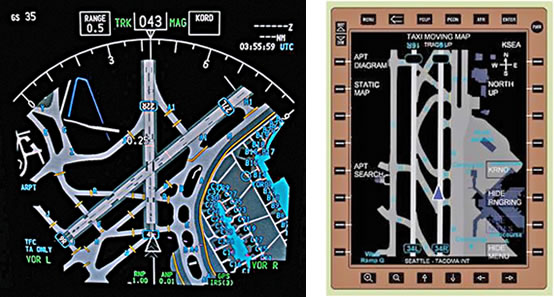
The Honeywell runway awareness and advisory system (RAAS) is available in production on the Next-Generation 737 and 777 and will be available on the 747-8 (see fig. 4). RAAS retrofit is offered on the Next-Generation 737 and 777. Retrofit is under consideration for the 717, 737-300/-400/-500, 747-400, 757, 767, MD-80/-90, and MD-10/-11 pending customer interest.
Figure 4: Runway awareness and advisory system (RAAS)
The RAAS Short Runway (left) and On Taxiway (right) alert visuals are displayed on the pilots’ navigation displays. These are accompanied by voice aurals.
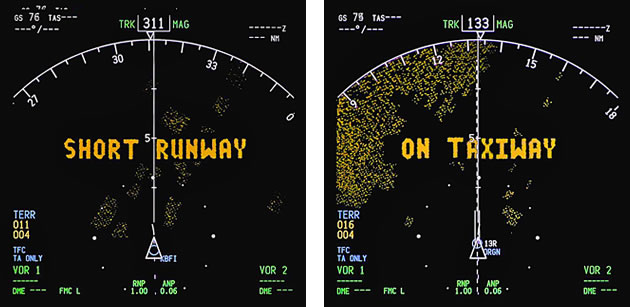
Future incursion/confusion-related enhancements under consideration include AMMs and runway-only moving maps (RMMs) with the display of taxi route, ADS-B air and ground traffic, runway status indications of occupancy and in-use, and traffic alerting. These may be implemented separately or in combination.
Taxi route may be manually entered, stored and recalled, or datalinked (see fig. 5). Datalink provides the greatest efficiency and safety benefit. Boeing is currently engaged in research and development of industry taxi route datalink standards.
Figure 5: AMM + taxi route
A Boeing prototype of graphical and alphanumeric taxi route is displayed on an AMM.
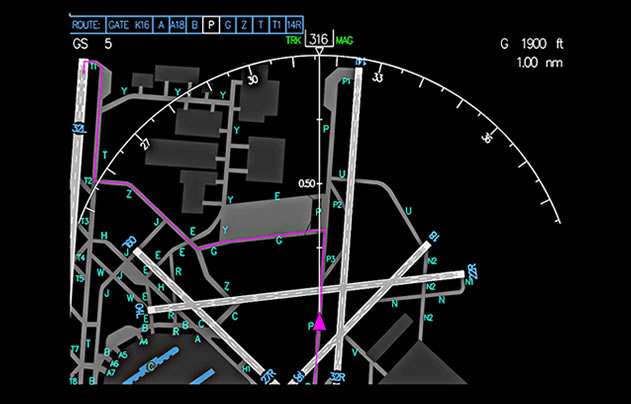
ADS-B enables ground traffic display (see fig. 6a). But the reduced airplane, runway, and taxiway separations involved in ground airport operations require very accurate position reporting and display of traffic. Traffic and traffic data filtering are required to ensure usable displays. Awareness of runway traffic that is beyond the selected display range (or off-scale) is important — especially during taxi where typical display range is low (see fig. 6b).
|
Figure 6a: AMM + airport traffic A Boeing research prototype of ADS-B airport traffic displayed on an AMM. |
Figure 6b: AMM + off-scale traffic indication A Boeing research prototype of off-scale traffic indication (in green) for airborne traffic on 22R approach displayed on an AMM. The display shows traffic identification, ground speed, and distance from ownship. |
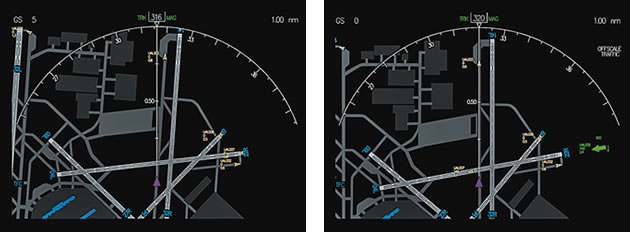
Runway status indications of runway occupancy and runway usage by takeoff or landing traffic enhance pilot awareness at a glance and thereby reduce pilot workload (see figs. 7a and 7b). These indications provide pilot awareness of possible traffic conflicts and reduce the need for alerting.
|
Figure 7a: AMM + runway status indications A Boeing research prototype of traffic-related indications of runway occupancy displayed on an AMM. |
Figure 7b: AMM + runway status indications A Boeing research prototype of traffic-related indications of runway in-use (for takeoff or approach/landing) displayed on an AMM. |
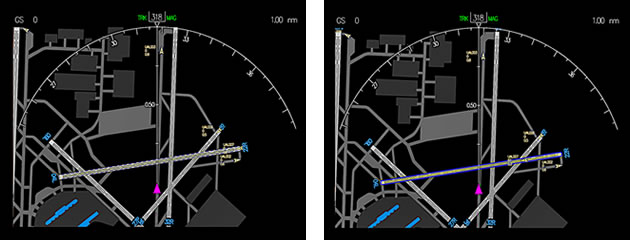
ADS-B traffic conflict alerting has significant potential safety benefit, particularly during takeoff and approach/landing. Off-scale traffic display and alerting also have high value (see fig. 8).
Figure 8: AMM + traffic alerting
A Boeing research prototype to alert for on-scale traffic conflict (left) and off-scale traffic conflict (right)
displayed on an AMM. A voice alert accompanies the display graphics.
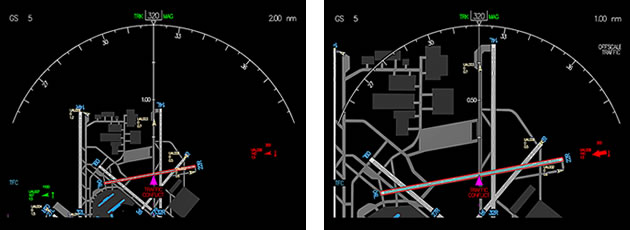
Boeing is supporting the development of industry standards for airport traffic display, indications, and alerting.
Runway excursion
Existing Boeing flight deck enhancements include a runway disagree alert to guard against wrong runway takeoff; integrated approach navigation, vertical situation display, and head-up display (HUD) enhancements to promote approach stability; speed brake alerting to help ensure proper configuration for deceleration after landing; and RAAS callouts (e.g., runway distance remaining) and alerts (e.g., short runway) to provide awareness of overrun risk. HUD is available for the Next-Generation 737 and is standard on the 787.
Future excursion enhancements under consideration include:
- Landing performance calculation and display.
- HUD cues on primary flight displays.
- Stabilized approach, landing, and braking performance displays.
- Unstable approach (e.g., too high or too fast), long landing, predicted overrun, and taxiway landing alerts.
- Optimized runway exiting for a graphical indication of estimated braking performance and a dynamic indication of stopping performance during landing (see fig. 9).
Figure 9: Optimized runway exiting
Predicted (green bars) and actual (green oval) stopping performance displayed on an AMM.
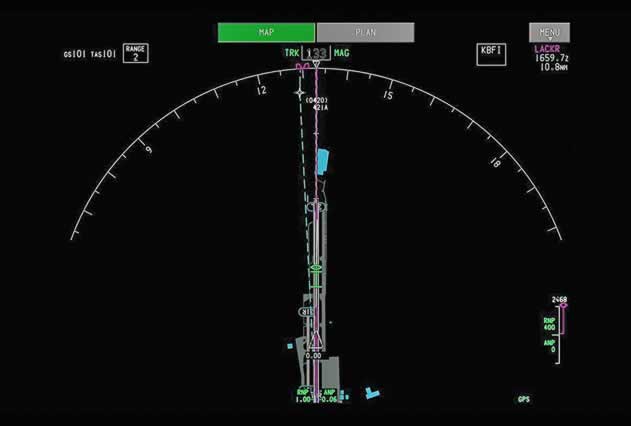
Summary
Boeing has implemented AMM and other flight deck enhancements and is developing future flight deck enhancements to promote runway safety during taxi, takeoff, and approach and landing operations. Boeing’s goal is gate-to-gate enhanced crew awareness of airplane position and performance, route, ground traffic, and other information that promotes runway safety and operational efficiencies.
For more information, please contact Sam Clark or George Trampus.



